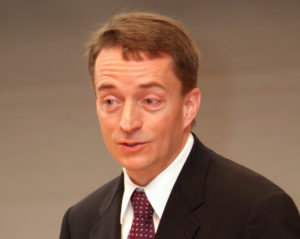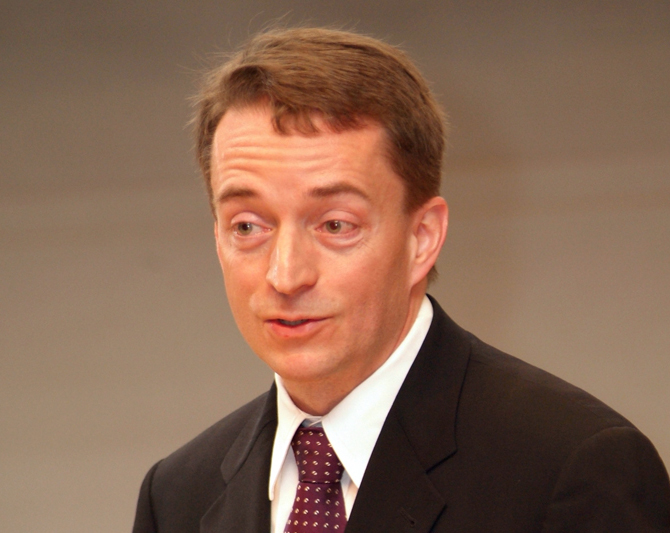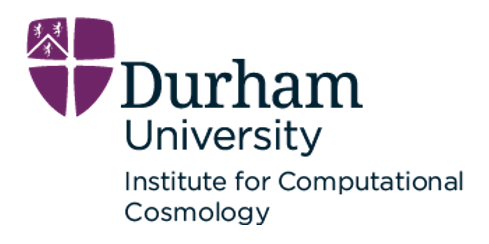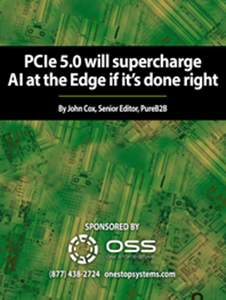 Stirring an already roiling Intel pot, two pieces of news broke this week that could have implications for the HPC industry: a report that the company has selected TSMC as its outsourced fab of choice for one of its 7nm GPUs; and that Bob Swan, after 2.5 years as interim and permanent CEO, will be replaced by VMware CEO Pat Gelsinger, a former Intel CTO.
Stirring an already roiling Intel pot, two pieces of news broke this week that could have implications for the HPC industry: a report that the company has selected TSMC as its outsourced fab of choice for one of its 7nm GPUs; and that Bob Swan, after 2.5 years as interim and permanent CEO, will be replaced by VMware CEO Pat Gelsinger, a former Intel CTO.
The news comes amid a partial unveiling yesterday at the Consumer Electronics Show by rival AMD of its soon-to-be-released EPYC “Milan” 7nm CPU, and a week after former Intel SVP of the Silicon Engineering Group, Jim Keller, was named president and CTO of Toronto-based AI startup Tenstorrent.
For its part yesterday at CES, Intel Data Center Platform Group EVP/GM Navin Shenoy said the company’s upcoming Xeon Scalable CPU, the 10nm “Ice Lake” chip that is roughly equivalent to EPYC Milan 7nm, will be ready for large-volume availability this quarter. Though three years late, Ice Lake “marks a significant milestone for Intel,” Shenoy said, “as we continue to accelerate the delivery of our 10nm products and maintain an urgent focus on execution to deliver a predictable cadence of leadership products.”
On the 7nm GPU front, Reuters has reported that Taiwan Semiconductor Manufacturing Co. (TSMC) has been tapped for Intel’s DG2 chip, a graphics processor for PCs. This could bear directly on whether – and how much – Intel outsources production of its delayed 7nm “Ponte Vecchio” GPU, which will be used in the Aurora exascale supercomputer to be installed at Argonne National Laboratory. Aurora was to have been installed this year as the first American exascale system, but Ponte Vecchio delays have pushed Aurora’s ship date to next year.
Last July, Swan said Intel might outsource some portion of Ponte Vecchio chip production – the speculation at that time was the company would go with either TSMC or Samsung. As much of a stir Swan’s disclosure caused, it should be noted that Intel already has a long standing customer relationship with TSMC (though not for CPUs). That Intel, a global leader in processor manufacturing for close to 50 years, would consider outsourcing Ponte Vecchio is a measure of the gathering competitive pressures the company faces in the high end co-processor chip market from AMD, GPU market leader Nvidia and other companies.

Pat Gelsinger
“This is a business model question,” said Steve Conway, senior adviser, HPC market dynamics, at industry analyst firm Hyperion Research. “Intel’s business model forever and ever has been based on building these very expensive – increasingly expensive – fabs, and keeping them busy. So the model has been, how do we generate enough business to keep those fabs busy, can get returns on those investments? That business model has worked really well – if you’re the only game in town and you don’t really have serious competition. You can do what they did, which is to vertically integrate, to do end-to-end process for designing, and then fabbing and selling the semiconductors. But the minute you have serious competition, which is for Intel has only been pretty recent, then the game changes.”
At AMD, for example, this has meant the company can focus resources on chip design and let its fab business partner, TSMC, focus on building out its manufacturing capabilities.
“They (AMD) can just say, ‘We’re only going to do the design part of this, you know, we’re not going to incur (fab) expense,’” Conway said. “And suddenly, with much less investment, you can compete with a company like Intel… I think the decision is made to (outsource) some things, but the real question (for Intel) is the pace of this transition, and how complete the transition will be.”
Intel’s delays with a 10nm CPU and a 7nm GPU have factored into this transition.
“I think the kind of stumbling that’s happened, the delays lately have really forced this,” Conway said.
Geopolitics also plays a role, with trade tensions between the US and China and an array of sanctions against US technology exports to China.
In short, Gelsinger takes over Intel at a time of transition in which critical decisions must be made in the face of pressure across the company’s product line and manufacturing fronts. In replacing Swan (who previously was Intel CFO), Gelsinger becomes Intel’s eighth chief executive, replacing the company’s shortest tenured CEO in Intel’s 53-year history.
With the turmoil surrounding Intel in recent years, it can be easy to overlook the company’s continued status as a juggernaut. Industry analysts estimate the company still has a more than 90 percent share of the HPC and data center server processor markets.




